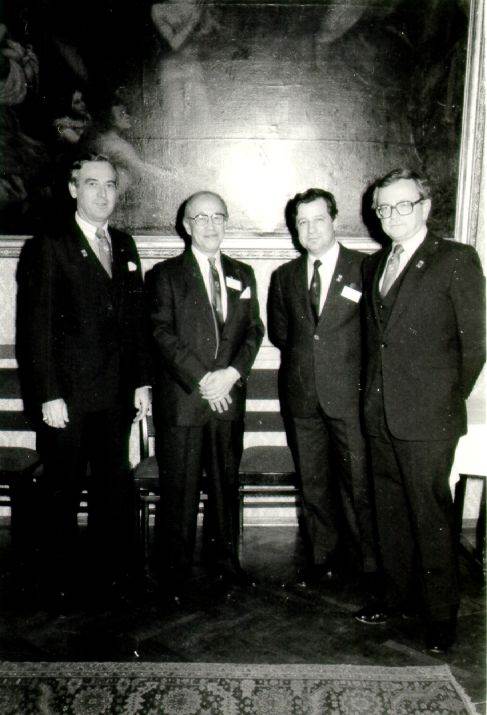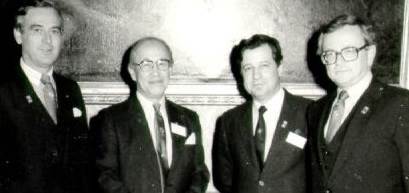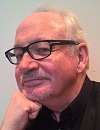Preamble
The Australian Computer Society (ACS) was formed 50 years ago, when the various state computer societies joined forces.
To mark the occasion, the ACS has initiated a heritage project to honour the many individuals who have contributed to the growth of the ICT profession in Australia.
At the heart of the project is a history of computing in Australia. It is not just a history of the ACS, but the history of a profession.
Australia has the longest computing history of any country, excepting the US and the UK, and CSIRAC in the Museum of Victoria is the oldest computer still in existence.
Chapter 23: ACS at home and abroad
After the success of Australia’s first two computer conferences (see Chapter 2 and Chapter 7) and long before the ACS was formed, a special body was formed to run computer conferences in Australia.
The Australian National Committee on Computation and Automatic Control (ANCCAC) was organised in 1958, mainly at the instigation of Australian computer pioneer John Bennett, who ran SILLIAC at the University of Sydney.
The first ANCACC conference was held jointly at the University of Sydney and the University of NSW on 24-27 of May 1960. Only 50 papers were expected, but over 150 were delivered, to 650 delegates.
In a survey of conference delegates, more than 400 of them said they were interested in the commercial aspects of computing. A hundred said they were attracted to papers on technical applications, and another hundred on design and programming techniques. The remaining 50 people said they were interested in all three categories.
The second ANCCAC conference was held in Melbourne on 26 February-1 March 1963. It attracted 68 papers and more than 600 delegates. A third was held in Canberra on 16-20 May 1966 – the year the ACS was founded – and attracted over 860 people.
ANCCAC then handed over responsibility for the conferences to ACS which held its first conference in 1969, in Adelaide. There were 1,470 delegates. During the 1970s, ACS conferences were held biennially: in 1972 in Brisbane, in 1974 in Sydney, in 1976 in Perth, and in 1978 in Canberra. After ACS took responsibility for the conferences, ANCCAC had no reason to exist. On 20 March 1969, it disbanded and handed over its assets to the ACS.
From its beginning, ACS was very active on the international scene. One of the driving forces behind the formation of a national society from a range of state bodies was the desirability of presenting a unified face to the rest of the world.
IFIP
Australia’s involvement with the International Federation for Information Processing (IFIP) began long before the foundation of ACS. IFIP was established in in 1960 under the auspices of UNESCO, following the first World Computer Congress in Paris in June 1959. The first IFIP council meeting was held in Rome in June 1960, with 15 member countries, and the second in Darmstadt in Germany in February 1961, when Australia was admitted.
IFIP was established as a non-governmental, non-profit umbrella organisation for national societies working in the field of information processing. At the time it was formed, ANCCAC was the only such body in Australia, and it joined IFIP on 1 January 1962. John Bennett was appointed ANCCAC representative to the IFIP Standards Committee and was elected a Trustee in 1974; he was Vice President from 1975 to 1978. In both positions, he served on the IFIP Council.

IFIP 25th Anniversary celebration: (L to R) A. Goldsworthy, President (1986-1989, K. Ando, President (1983-1986), B. Sendov, President (1989-1992), G. Glaser, VP (1982-1988). Source: IFIP
Ashley Goldsworthy replaced John Bennett as Australia’s representative in 1980. At various times the ACS President (!974-75 and 1982-83) and CEO (1990-94), Goldsworthy served as IFIP’s President in 1986-89 (in 1999 he was elected as one of the few ever Honorary Members of IFIP).
Australia’s profile within IFIP greatly increased in 1980, when its triennial counsel global conference was held jointly in Melbourne and Tokyo. Planning had begun in 1969 with an unsuccessful bid for the IFIP 1977 Congress, led by John Bennett.
The decision to hold IFIP 80 in Melbourne and Tokyo was made in August 1975, after both cities had bid for it, chiefly through the efforts of Peter Murton and Ashley Goldsworthy, who put in the bid at the 1974 IFIP convention in Stockholm. The Tokyo leg of the 1980 conference was held on 6-9 October and the Melbourne leg on 14-17 October. There were 3.665 delegates across the entire conference, with 1,782 attending in Australia.
SEARCC
The South East Asian Regional Computer Confederation (SEARCC) originated in an informal lunch 1974 at the IFIP conference in Stockholm. The Indian representative, R Narasimham, and John Bennett agreed that regular Southeast Asian conferences should be arranged and that membership rules should be changed to enable smaller local societies to join IFIP as regional members.
On his way back to Australia, John Bennett contacted Robert Iau, President of the Singapore Computer Society, who undertook to make arrangements of the first SEARCC conference in Singapore in September 1976. The six founding computer societies represented Singapore, Hong Kong, the Philippines, Indonesia, Malaysia and Thailand. They were later joined by India (1978), Pakistan (1984) and Sri Lanka (1986). Australia, through ACS, became a full member in 1989.
ASCOCIO
In 1984, the ACS was approached by the Japan Information Service Industry Association (JISIA) to form an association with it and other Asian nations that would represent the entire computer industry in each country. The result was the Asian-Oceanian Computer Industry Organisation (ASOCIO), formed later that year. Founding members were Australia, Japan, Korea, New Zealand, Singapore, and Taiwan.
ASOCIO was an association of all IT organisations, including those representing vendors. Other Australian members were the Australian Information Industry Association (AIIA), the Australian Computer Equipment Manufacturers Association (ACEMA), and the Australian Software Houses Association (ASHA). The later two groups were subsequently combined to become part of the Australian Information Industry Association (AIIA),
ACS members served with distinction over a long period, notably Jack Shaw, who had chaired the ACS’s early Committee on Developing Countries, and John Goddard who was also involved with SEARCC.
Veteran ICT journalist Graeme Philipson is researching and writing the Heritage Project book, which is due for release on the 50th anniversary of the formal incorporation of the ACS, on 3 October 2017.
The project also involves the creation of a ‘virtual museum’, cataloguing hardware and other artefacts, and collecting and curating documents on the history of the industry, including oral histories of as many people as possible.
Please get in touch with Graeme if you would like to contribute, at [email protected]
Do you have early memories of the ICT industry in Australia? Help us make history by sending us your story! Record or write your memories to be included in our historic ACS Heritage Project. Details here.
Previously published:
Chapter 22: The early years of the Australian Computer Society
Chapter 21: Other Australian universities
Chapter 20: University of Melbourne and Monash
Chapter 19: Sydney University and UNSW lead the way
Chapter 18: Computing in the Australian Government
Chapter 17: Trevor Pearcey and the birth of CSIRONET
Chapter 16: Enter the minicomputer – DEC comes to Australia
Chapter 15: The IBM S/360 in Australia
Chapter 14: IBM redefines the computer industry
Chapter 13: Control Data Australia (part II)
Chapter 12: Control Data Australia (part I)
Chapter 11: The Australian Computer Society
Chapter 10: Five Computer Societies
Chapter 9: Australian made, Australian designed
Chapter 8: Australia's Computer Industry in 1962
Chapter 5: SILLIAC and the Snowy Mountains Scheme
Chapter 3: Harry Messel and the birth of SILLIAC









%20at%20the%20controls%20of%20CSIRAC%20in%201956.%20Standing%20(l.%20to%20r.)%20Ron%20Bowles,%20Trevor%20Pearcey,%20Ernest%20Palfreyman.png.transform/320x180/img.jpg)
